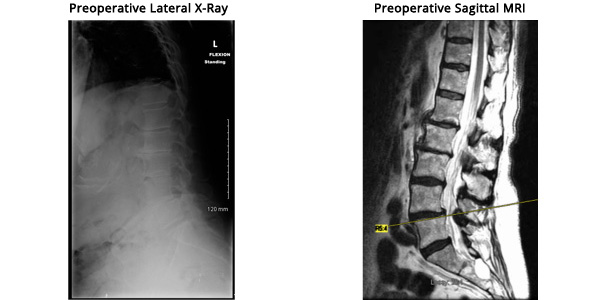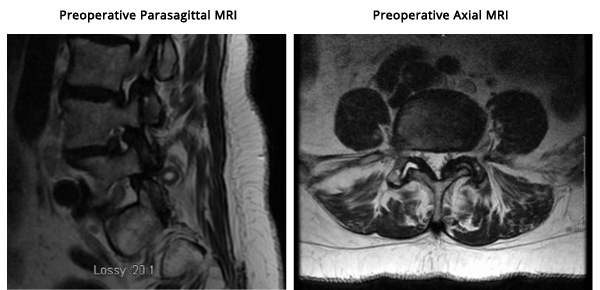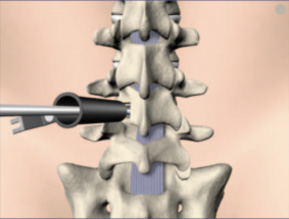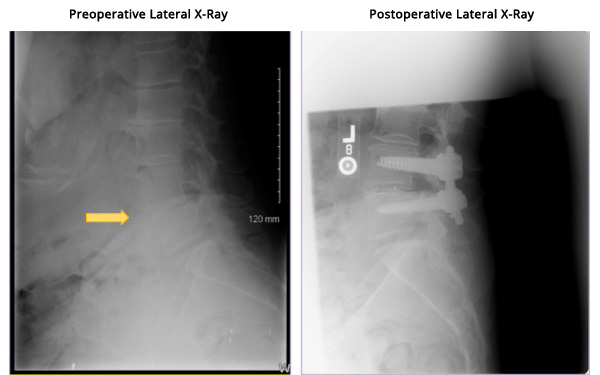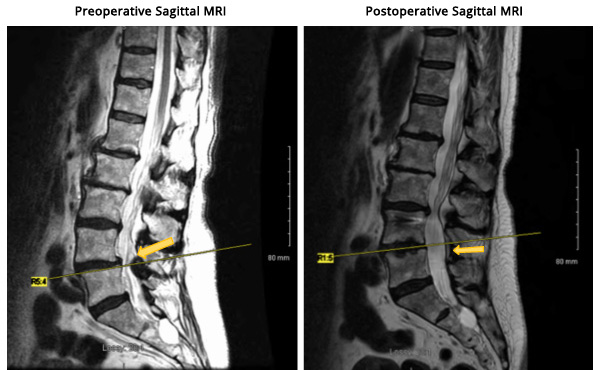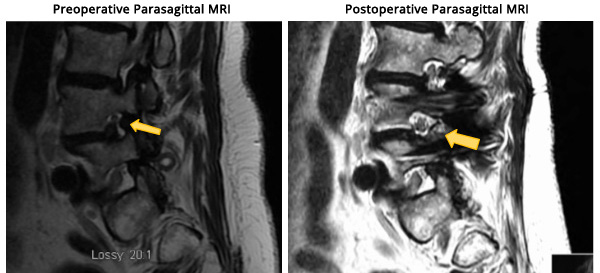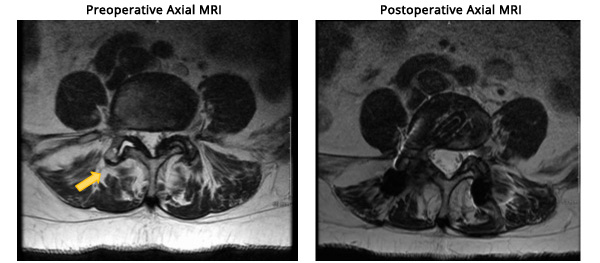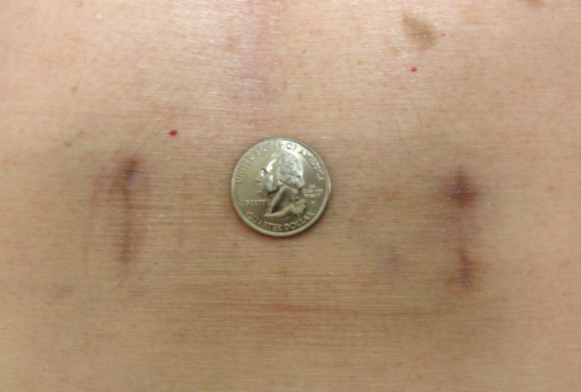History
A 75 year old female presented complaining of five months of progressive lower back and bilateral lower extremity pain, left greater than right. At the time of presentation, her symptoms were severe and debilitating preventing her from standing for periods longer than ten minutes.
She had tried formal physical therapy, therapeutic massage, epidural steroid injections, oral pain medications (including narcotics and NSAIDs) and lumbar spine activity modification.
Examination
On examination, she was found to have painful, restricted lumbar range of motion and positive sciatic nerve stretch testing of the left lower extremity.
Pre-treatment Images
Diagnosis
She was diagnosed with a L4-5 grade 1 degenerative spondylolisthesis with facet arthritis and mild-to-moderate spinal stenosis.
Her pre-operative MRI showed: Severe L4-5 foraminal stenosis resulting in compression of the exiting L4 nerve root and sciatica. It also showed L4-5 Spinal Stenosis and facet joint arthritis with fluid in the right facet joint.
Selected Treatment
The patient underwent a minimally invasive Transforaminal Lumbar Interbody Fusion (TLIF ) and Laminectomy. The Minimally Invasive TLIF was performed with central interbody cage placement. A Minimally Invasive Laminectomy was also performed to decompress the stenosis.
As shown above the MIS TLIF and Laminectomy are performed through a tubular retractor 22-26mm in diameter.
This procedure allowed for reduction of the slippage at L4-L5 and realignment of the spine. It also allowed for decompression L4-5 neuroforaminal stenosis so that there was space created for the exiting L4 nerve root.
Before and After Images
Preoperative X-Ray shows slippage of the spine at L4-5. Postoperative X-Ray Shows reduction of the slippage with MIS TLIF and Instrumented Fusion.
The L4-5 spondylolisthesis has been reduced with MIS TLIF and spinal instrumentation. The spine has been realigned. The spinal stenosis has been decompressed with a minimally invasive laminectomy.
The preoperative L4-5 neuroforaminal stenosis has been thoroughly decompressed.
Minimally Invasive TLIF has been performed with central interbody cage placement. A Minimally Invasive Laminectomy has also been performed to decompress the Stenosis.
Outcome
The patient experienced resolution of her lower extremity and lower back pain. She commenced formal physical therapy after six weeks of recovery and gradually returned to a regular lifestyle.

